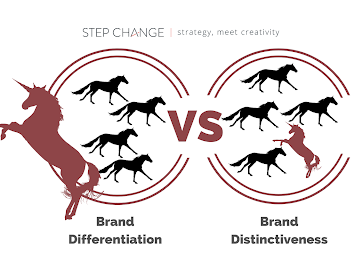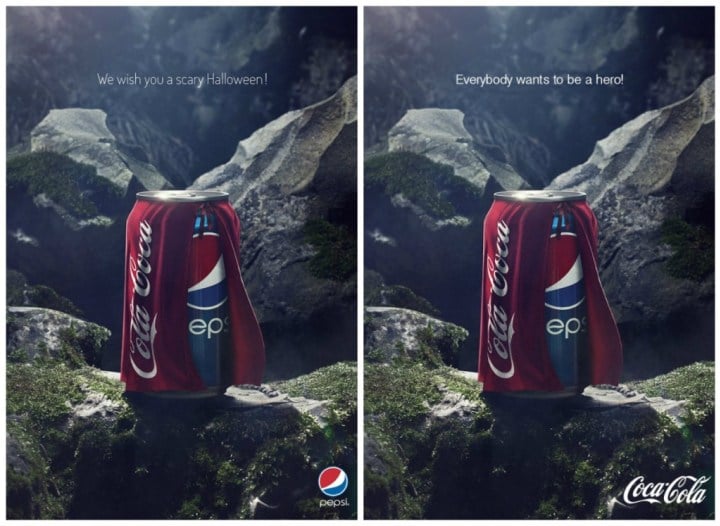Your brand is anything that comes from your company as a specific source. To the consumer, it symbolises what they can expect when they do business with you. And in today’s crowded marketplace, it’s more important than ever to ensure that your brand stands out from the crowd.
Use Archetypes to Create a Memorable Brand
The use of the archetype in literature and movies is well-known. By examining the main types of characters, it’s easy to see where just about any character can be placed among the recognised archetypes.
The same has been discovered about branding. When you are planning to develop your brand, begin with your brand’s personality.
Think about the 12 brand archetypes that Carl Jung had distinguished. These are the Sage, the Ruler, the Explorer, the Hero, the Regular, the Outlaw, the Caregiver, the Creator, the Innocent, the Jester, the Magician, and the Lover.
When you look at highly established brands such as Victoria’s Secret, McDonald’s, and Coca-Cola, it’s easy to see which archetype each has adapted. Victoria’s Secret embodies the Lover; McDonald’s, the Regular; and Coca-Cola, the Magician.
Which one would be best for your company? Establishing just the right archetype that will ring true to your customer base is the first step in creating a memorable brand.
Look at your demographics, your price point, and who it is that you are marketing to. Are they looking for a brand that’s radical and countercultural? Or are they after a brand that nurtures?
Using a branding archetype will give your customers a familiar feeling when they engage with your company. It will also create a subtle, unconscious connection to the traits they are seeking out.
If you choose the right archetype and create a convincing brand around it, you will create brand loyalty in your customers.
Even when faced with all the competition, they will continue to feel connected to your brand. They will remember the energy and emotional connection to your brand, even without seeing its logo.
Create Value for Your Customer
What does your About Us page say about your business? Does it say what year your business was established as well as how trustworthy and friendly it is?
If so, you will have plenty of competition. A wide range of businesses describe themselves in just that manner. Doing so gives the customer no real information about why they should do business with you.
To create value for your customers, consider these steps.
1. Know your organisational purpose and ambition. It’s important to remember that your brand is really a mental image for the customer, not a tangible thing they can read and look at. To hone your brand into a more specific image for your customers, start by identifying what your ultimate purpose and ambition are.
2. Understand your customers better. Find out what is important in their lives and why they choose the brands they do. You can reposition your company to grab a bigger market share by figuring out why they spend their money the way they do and offering them just what they’re looking for.
3. Create your value statements. This is where you will show your customers just why it’s so valuable to do business with you. List the features of your product or service. Show them what they will get for their money.
Then let them know how they will benefit from each of these features. Keep the customer in mind here, and tailor the benefits to their needs. Then let them know the implications of having what you sell. How will it change their lives? Let them know how their lives will be better once they’ve purchased from you.
4. Finally, know the personality of your brand. The key to having a brand that customers remember and come back to is its consistency. Its brand personality should be established so that customers know what to expect when they engage with your business.
Engage in Brand Positioning
Your brand’s archetype and value proposition are just part of what will bring customers to you. Once these are in place, it’s time for brand positioning.
With this approach, you create a strong statement about what sets your business apart. This doesn’t mean creating competition statements — it’s all about letting the customer know what makes you different and how that will benefit them.
What makes your business different from the competition?
It may be that your product is the easiest to use on the market.
Or your business may be the oldest in town in your industry.
You may choose to play up the fact that your business is locally owned or that it’s environmentally and/or socially responsible.
You may have the largest selection of a certain product in town.
Or by having a smaller business, you can point out the amount of attention you have to devote to each customer.
When you look at every aspect of your business, you will be able to find something that makes it stand out in the customer’s mind and gives your company a better position to them.
It may be that your business is simply the most popular, and pointing this out will lead to an assumed value found in its popularity. Dig deep to find what can be used to reposition your business.
Once you find what makes your business a standout, proclaim that feature to the public. In short, what you say about your business should never be the same thing that your competitors say about theirs.
Setting your business apart in the customer’s mind is the goal, and this can be an extremely effective branding method.
Associating your brand with specific occasions is an extremely effective method. When your customers have this occasion come up, they will automatically think of your brand. Your brand will become a tradition, and it will likely be passed down in the family for an even larger customer base.
Other important points you can use in brand positioning are the different ideology of your brand that can be used in the customer’s self-expression, the personal enrichment opportunities that you provide, and the connection that your products create with others.
Your company may be an innovator that provides the newest items to customers first. It may be that your brand is exclusive and creates an in-crowd among its customers, or it may give them the best service in the area. No matter what you choose to support your brand positioning, make sure your customers hear about it.
Bringing It All Together to Define Your Brand
Using brand archetypes, creating your value proposition, and positioning your brand — all these create a cohesive feel that gives customers the appropriate impression of your business.
Customers feel your brand rather than see it on a shelf, and it’s important that your branding sets you apart so that it creates that emotional connection in your customers.
If you are launching your business, it’s a great time to get your complete branding arsenal together so that you create an impact in your target customers’ minds. Starting with a clear picture of what you have to offer to customers is a great way to start building an image that endures in the public’s minds.
If your business has been around for months or years, you can still recreate or re-establish the image for your business. Put all of these methods into practice and give customers a specific feeling when they see what you sell.
Aligning your brand with an established archetype gives customers an automatic connection to something that is already emotional and established.
By creating your value proposition, you are instructing customers how they will benefit from buying from you. This creates a higher level of need in the customer and a stronger inclination to buy from you.
With brand positioning, you create a specific idea that will set your brand apart from the competition.
When your customers know why they should buy from you, what to expect from you, and how being your customer will make their lives better, you have a brand with real impact.
Using all of these methods to create a targeted effect is a far better approach to branding than creating a generic brand that seeks to bring in as many customers as possible.
Rather than trying to reach everyone, reaching your specific demographic and building a large number of loyal customers will keep your business growing and keep your reputation on top.
 Ashton Bishop is Australia’s Predatory Thinker — an expert in pinpointing how businesses can grow by outsmarting their competitors. His niche is in strategy, where he has spent the last 14 years working internationally on some of the world’s biggest brands. He’s a business owner and serial entrepreneur, challenging, sometimes even controversial, but always focused on what gets results.
Ashton Bishop is Australia’s Predatory Thinker — an expert in pinpointing how businesses can grow by outsmarting their competitors. His niche is in strategy, where he has spent the last 14 years working internationally on some of the world’s biggest brands. He’s a business owner and serial entrepreneur, challenging, sometimes even controversial, but always focused on what gets results.








![Top 10 Articles C-Suites Read in the Step Change Blog [2019 Edition]](https://blog.hellostepchange.com/hubfs/step-change-top-10-articles-2019.001.jpeg)







